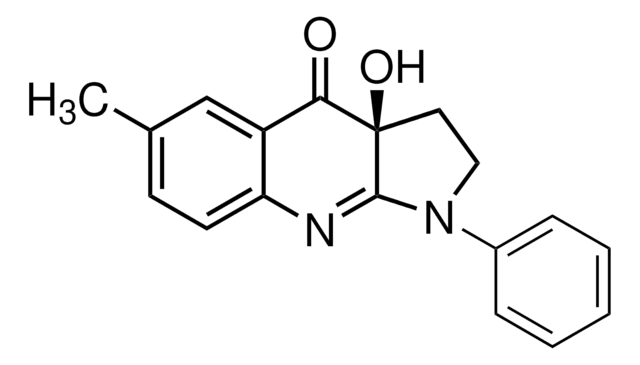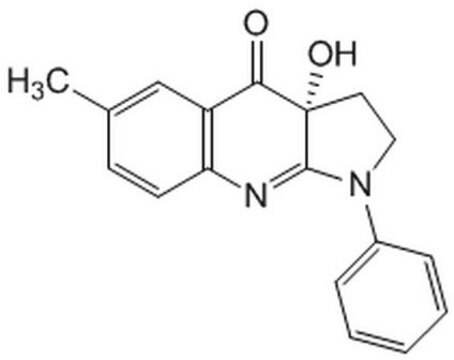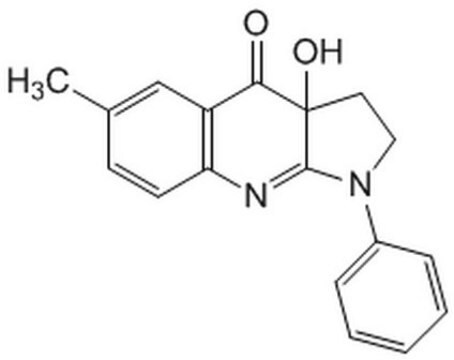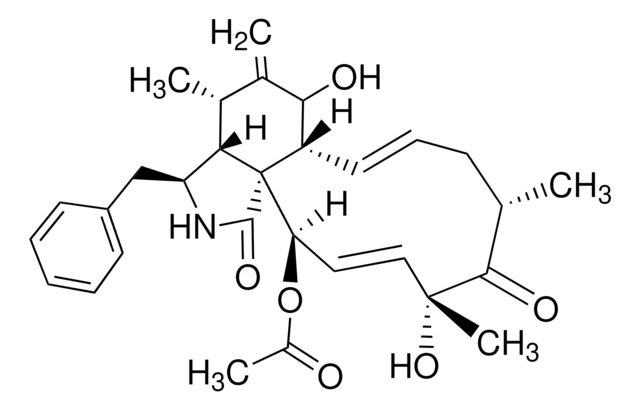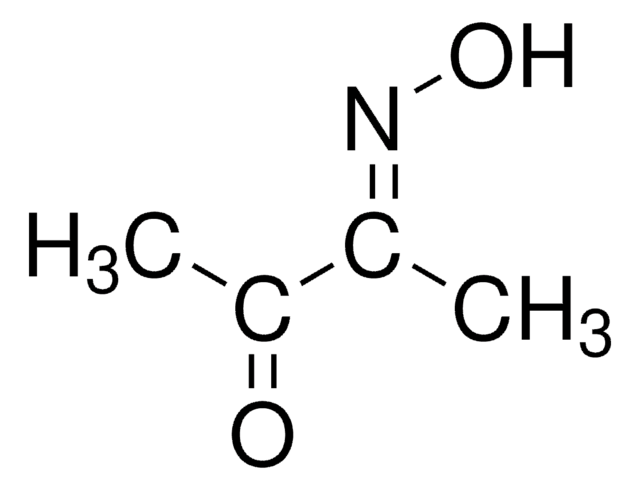203391
(-)-Blebbistatin
≥98% (HPLC), solid, ATPase inhibitor, Calbiochem®
Synonim(y):
(-)-Blebbistatin
About This Item
Polecane produkty
Nazwa produktu
(-)-Blebbistatin, The active enantiomer of (±)-Blebbistatin that accounts for the inhibitory activity towards ATPase and myosin II-dependent cellular processes.
Poziom jakości
Próba
≥98% (HPLC)
Formularz
solid
siła działania
2 μM IC50
producent / nazwa handlowa
Calbiochem®
warunki przechowywania
OK to freeze
protect from light
kolor
yellow
rozpuszczalność
methanol: 1.5 mg/mL
100% DMSO: 100 mg/mL
90% DMSO: 75 mg/mL
Warunki transportu
wet ice
temp. przechowywania
−20°C
ciąg SMILES
N2(CC[C@@]3(C2=Nc4c(cc(cc4)C)C3=O)O)c1ccccc1
InChI
1S/C18H16N2O2/c1-12-7-8-15-14(11-12)16(21)18(22)9-10-20(17(18)19-15)13-5-3-2-4-6-13/h2-8,11,22H,9-10H2,1H3/t18-/m1/s1
Klucz InChI
LZAXPYOBKSJSEX-GOSISDBHSA-N
Opis ogólny
Działania biochem./fizjol.
Opakowanie
Ostrzeżenie
Rekonstytucja
Inne uwagi
Shu, S., et al. 2005. Proc. Natl. Acad. Sci. USA102, 1472.
Kovacs, M., et al. 2004. J. Biol. Chem.279, 35557.
Straight, A.F., et al. 2003. Science299, 1743.
Informacje prawne
Kod klasy składowania
11 - Combustible Solids
Klasa zagrożenia wodnego (WGK)
WGK 3
Certyfikaty analizy (CoA)
Poszukaj Certyfikaty analizy (CoA), wpisując numer partii/serii produktów. Numery serii i partii można znaleźć na etykiecie produktu po słowach „seria” lub „partia”.
Masz już ten produkt?
Dokumenty związane z niedawno zakupionymi produktami zostały zamieszczone w Bibliotece dokumentów.
Nasz zespół naukowców ma doświadczenie we wszystkich obszarach badań, w tym w naukach przyrodniczych, materiałoznawstwie, syntezie chemicznej, chromatografii, analityce i wielu innych dziedzinach.
Skontaktuj się z zespołem ds. pomocy technicznej